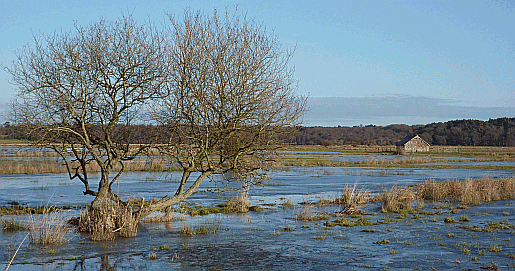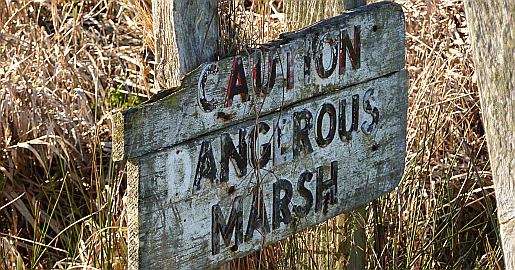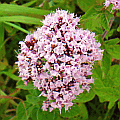
Amberley Wildbrooks
It's a remote place, largely untamed by man, with spectacular scenery all round.
The Wild Brooks are a Site of Special Scientific Interest, principally because of the diversity of bird life supported there. Unfortunately the number of species recorded in the area is declining because of the steps taken to improve the drainage of the area.
In wintertime many years ago it was possible to take a boat across the valley, passing above fields that were pasture in summer.
Despite the improved draining of the valley, even today parts of Amberley Swamp were very dangerous places to get stuck.
It pays to be careful before setting off across the Wild Brooks. There are few footpaths and the safest route is the Wey South Path runs northwards from Amberley towards the lovely bridge at Greatham. Even so, parts of the Wey South Path can be very wet indeed.
Covering around 800 acres, Amberley Wildbrooks is an important habitat for wetland plants and parts of the area are managed by the RSPB. The bird species for which Amberely Wildbrooks are noted include snipe, teals, widgeons and geese.
Recently work has been done to clear vegetation from around ancient tumuli at the eastern side of the area in Rackham Plantation. These tumuli contain burial chambers and have commanding views over the valley towards present day Coldwaltham.
Where to stay near Amberley Wild Brooks

- Arundel
- Bognor Regis
- Burgess Hill
- Chichester
- Crawley
- East Grinstead
- Haywards Heath
- Horsham
- Littlehampton
- Midhurst
- Petworth
- Shoreham-by-Sea
- Steyning
- Worthing


- Amberley village
- Bignor
- Bury
- Burpham
- Coldwaltham
- Duncton
- Fittleworth
- Greatham Church
- Houghton
- Slindon
- South Stoke
- Storrington
- West Chiltington


